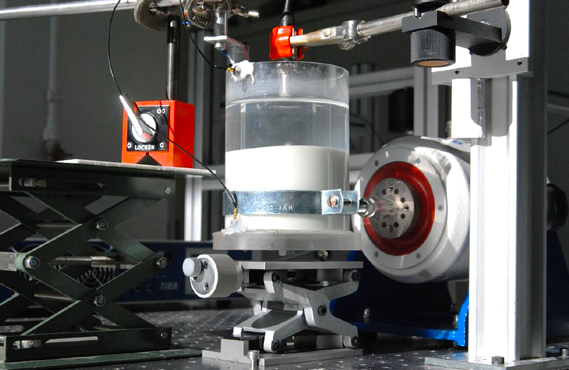Involved in phenomena such as quicksand, soil liquefaction is a phenomenon that still holds mysteries. Researchers at Institut Langevin (CNRS, ESPCI Paris, PSL University) shed new light on this phenomenon, showing that it could be caused by vibration-induced lubrication between soil grains. This result, published in Scientific Reports, is based on measurements carried out with ultrasound.
Soil liquefaction may lead to considerable damage such as collapse of buildings, dams or bridges. Under the effect of a seismic shock, an initially loose granular soil tends to compact. The water it contains rises and temporarily suspends the grains that compose it. In this phase, the soil behaves like a loose rock, which no longer offers any resistance to an external loading. In the case of an initially compact soil, researchers from Institut Langevin (CNRS, ESPCI Paris, PSL University) discovered that this transition from a solid-like state to a fluid-like state rather resulted from an acoustic lubrication: Soil vibrations, emitted in the acoustic range, reduce the friction between grains. These latter then slide over each other, without any rearrangement visible to the naked eye.
The experimental setup consists of a Plexiglas container filled with glass beads of 100 micrometers in diameter and saturated with water. A steel ball of a few millimeters is placed at the top. The sinking of this intruder is tracked thanks to an ultrasound transducer, which is able to follow it even when completely immersed. The intruder remains initially in place until horizontal vibrations are applied to the container. Above certain amplitude of vibration, the intruder begins to sink and descend deeper and deeper into the ground, without any rise in the water level or any visible macroscopic grain rearrangements. This study could pave the way for a better understanding of landslides caused by vibrations, whether these are related to human activities or natural phenomena, such as volcanoes.
Related publication
S. van den Wildenberg, X. Jia, J. Léopoldès, & A. Tourin. Ultrasonic tracking of a sinking ball in a vibrated dense granular suspension. Scientific Reports volume 9, Article number: 5460 (2019).
Contact
Arnaud Tourin
arnaud.tourin@espci.fr
Xiaoping Jia
xiaoping.jia@espci.fr








